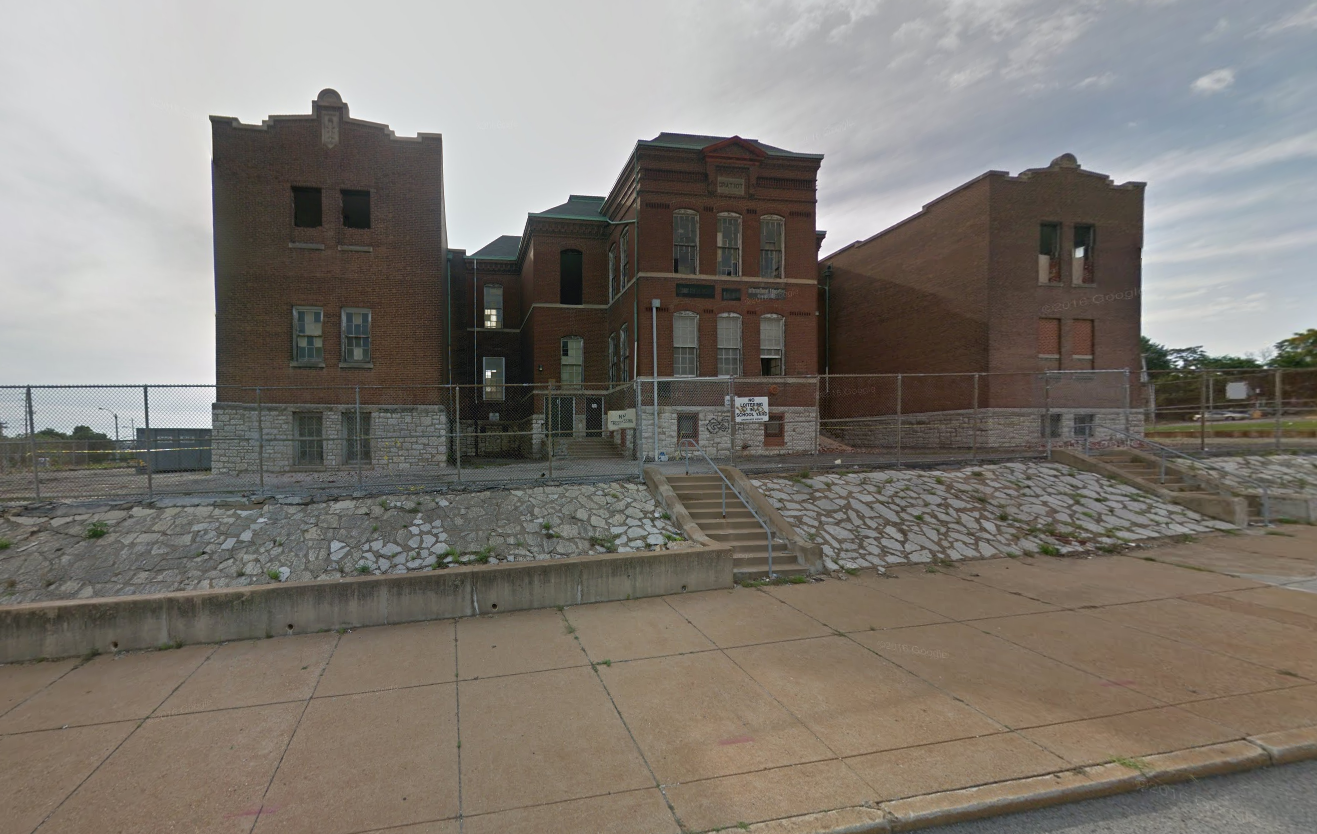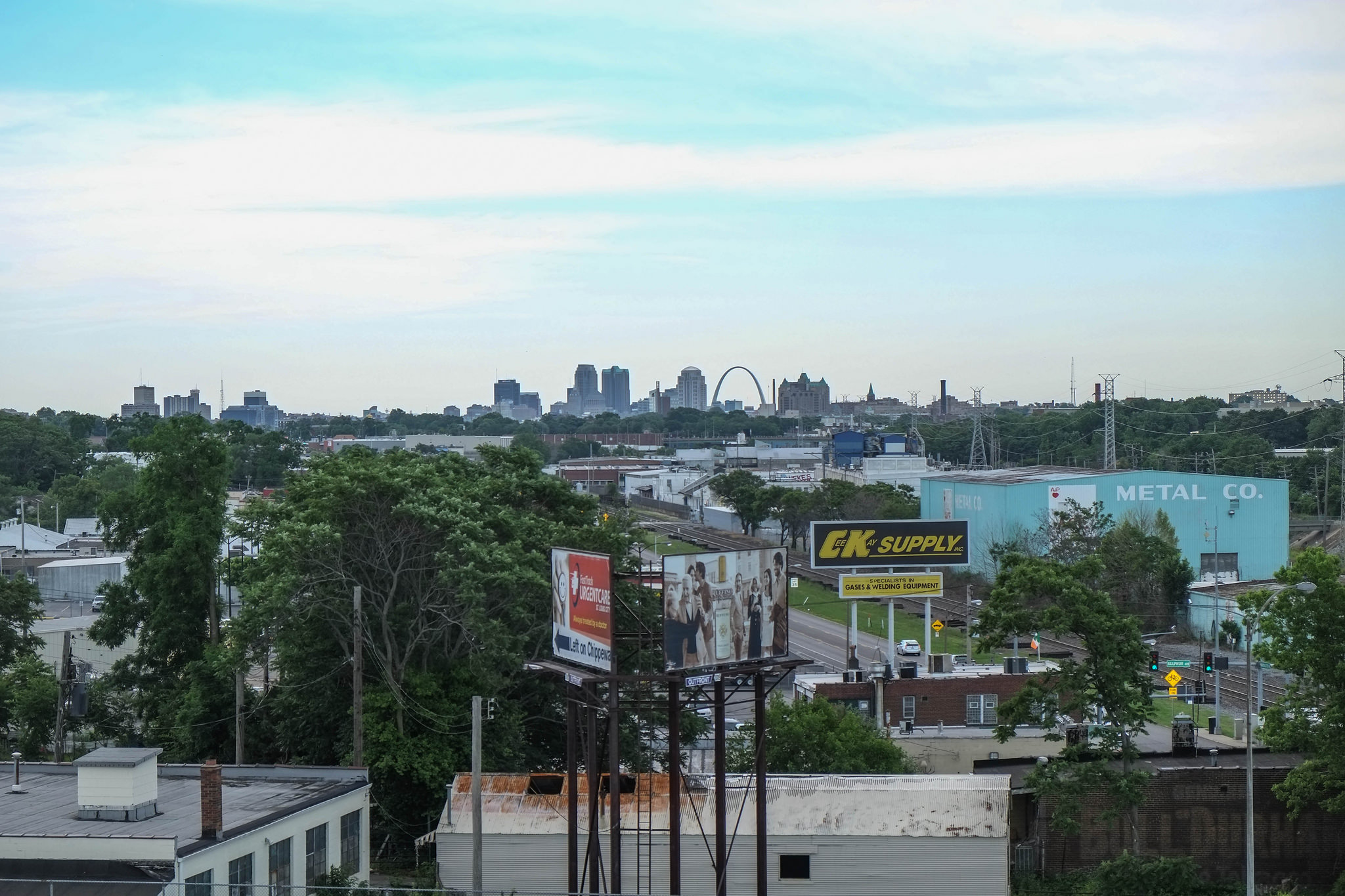Back in the mid-oughts, Jarret Glasscock was happily ensconced at the Genome Sequencing Center at Washington University in St. Louis, working on the federal government’s Human Genome Project. He and his fellow scientists were exceptionally good at what they did: they could sequence the DNA of a cell for about 1/100,000th the cost of traditional methods. Pharmaceutical companies soon came knocking on their door with contract offers to do DNA sequencing for drug development purposes. But the center was busy fulfilling government grants and kept turning the offers down. After a few years of this, says Glasscock, “we finally got it through our thick skulls that maybe there’s a need for some kind of company to exist.”
So, in 2008 Glasscock and a few colleagues pulled together whatever money they could, rented a former photographer’s studio downtown off Craigslist for $700 a month, and filled the office with half a million dollars’ worth of used genetic sequencing machinery—which they cleverly managed to convince the company that sold it to them to finance. Pretty soon, their new company, Cofactor Genomics, was making money. They hired more staff, bought better equipment, and briefly made international news when they helped map the genome of heavy-metal icon Ozzy Osbourne.
Eventually, Glasscock became the company’s CEO and the firm moved to its current digs, a squat brick industrial building in Midtown St. Louis that backs up to Interstate 64. A metal coatings factory sits on one side; on the other, across a vast empty parking lot, a giant grain elevator looms.
Inside, the décor is contemporary high tech with a slight midwestern twist. It’s mostly one big open space, with a couple of glassed-in conference rooms with math equations scrawled on the panes. Two ski lift gondolas, bought for $800 each from a resort in Wisconsin, are available for more intimate meetings. On a wall is a vintage sign that reads “Gun Shop” next to a picture of a revolver. The barrel of the gun points toward the back, where the gene sequencing lab is located behind closed doors secured with push-button combination locks—a precaution demanded by Cofactor’s pharmaceutical industry clients, who are serious about protecting their intellectual property. In a corner by the back door is a drum set and some old bikes the company’s eighteen employees can use to go to lunch. There haven’t been many places to eat in this aging industrial part of Midtown. But more and more restaurants and coffee shops are popping up to cater to the 150 startups now occupying several rehabbed buildings in the neighborhood, which has been renamed the Cortex Innovation Community.
Cofactor is now being feted by the kind of West Coast venture capital investors who, a decade ago, would never have thought to put money into a St. Louis startup. The firm’s leaders were invited to spend last summer networking at Y Combinator, the famed Mountain View seed fund that nurtured Airbnb and Dropbox. In February, Cofactor acquired a San Francisco–based competitor, Narus Biotechnologies.
To many Americans, St. Louis is known for urban dysfunction and slow economic decline. It was in the nearby suburb of Ferguson in 2014 that riots broke out after a white police officer shot an African American teenager. St. Louis is one of those places where every year or two another big homegrown company seems to get bought by outside owners: aircraft maker McDonnell Douglas in 1997, food processor Ralston Purina in 2001, May Department Stores in 2005, brewer Anheuser-Busch in 2008. As this magazine recently reported (see Brian S. Feldman, “The Real Reason Middle America Should Be Angry,” March/April/May 2016), as a result of changes in federal antitrust and other competition policies, the number of Fortune 500 companies located in St. Louis has shrunk from twenty-three in 1980 to nine today.

Growth industry: Kristine Menn, greenhouse coordinator for the St. Louis-based renewable fuel startup Arvgenix, works on a field pennycress flower in the Danforth Plant Science Center.
But as the story of Cofactor Genomics illustrates, a city that has lost so many big old companies is becoming home to a lot of small new ones. Last year, Popular Mechanics deemed St. Louis to be one of the fourteen best startup cities in America, and in January of this year, Business Insider said it had the “fastest-growing startup scene” in the country.
St. Louis is a long way from becoming another Silicon Valley. But its sudden emergence as a hotbed of entrepreneurship holds lessons for a country struggling to make a growing economy benefit Americans who don’t happen to live in a handful of booming coastal megalopolises. For decades, St. Louis followed the familiar economic development playbook: try to attract big out-of-town companies, or keep local ones from leaving, by showering them with tax breaks and other subsidies. While it hasn’t exactly abandoned that old strategy, St. Louis has increasingly shifted to a new one of attempting to grow its own small firms. Metro areas across the country are trying to do the same, in many cases with little to show for their efforts. St. Louis seems to have hit on the right formula, though actions in Washington could determine whether, over the long term, it succeeds or fails.
While it may be hard for people who think of St. Louis as part of “flyover” country to wrap their heads around the idea of it as a startup haven, the numbers don’t lie. Business creation in St. Louis has risen every year since 2009, jumping 18 percent from 2012 to 2013, a year business creation actually fell nationally. In 2006, St. Louis was 11 percent below the national average in the number of new firms per 100,000 people. By 2012, St. Louis had narrowed this “startup density” gap to only 3 percent, according to the Kauffman Index of Entrepreneurship. St. Louis now ranks twenty-sixth among the top forty metro areas by startup density, ahead of some cities that garner lots of attention for their entrepreneurship scenes, like Pittsburgh, Columbus, and Philadelphia.
St. Louis’s startup scene is most noticeable in the information technology sector, led by such firms as the social media company LockerDome and app developers RoverTown and Aisle411. Venture capital companies poured $176 million into area IT startups in 2015, up from $66 million in 2013, according to the St. Louis Tech Startup Report. That is roughly double the figure of Kansas City, a region of a similar population on the other side of the state. St. Louis tech startups employed more than 1,400 people in 2015, up from less than half that in 2011. In 2015, three new accelerators started in St. Louis, and three new venture capital funds entered the fray.
But it’s not just IT and biotech startups that are flourishing. New St. Louis firms are popping in sectors like education, food, and—in the longtime home of Budweiser—craft beer.
The roots of St. Louis’s startup boom go back to the late 1990s, when a group of political and business leaders, frustrated with the metro area’s slow economic growth, began studying how other old industrial cities, such as Boston, were turning themselves around. They concluded that St. Louis had the necessary resources—highly ranked universities, med schools, and hospitals, plus major research-focused agricultural firms like Ralston Purina and Monsanto—to become a hub of life science startups. This precipitated the creation of a number of economic organizations that today form a kind of infrastructure for entrepreneurial activity: new investment funds, incubators for companies, new workforce programs.
Two organizations were especially critical in these early years. One was the Donald Danforth Plant Science Center, which opened in 2001 with funding from Monsanto and the Danforth Foundation (William H. Danforth was the founder of Ralston Purina). It has quickly grown into a world-renowned research facility, attracting tens of millions of dollars in federal grants annually to support hundreds of plant scientists. These scientists work directly with ag-tech startups developing new strains of crops that have, say, higher nutrition value, or better capacity to withstand the droughts that come with climate change. The center also cofounded the Ag Innovation Showcase, which has become the premier event in the nation around agricultural technology and innovation.
The other key institution was the Skandalaris Entrepreneurship Program at Washington University, begun in 2001 and expanded in 2003 with a grant from the Ewing Marion Kauffman Foundation. Renamed the Skandalaris Center for Interdisciplinary Innovation and Entrepreneurship, it became a hub of entrepreneurial training and networking, with a mentoring program for budding area entrepreneurs that has proved invaluable.
To many Americans, St. Louis is known for urban dysfunction and slow economic decline. In fact,Business Insider says it has the “fastest-growing startup scene” in the country.
But by 2008, all this activity still wasn’t generating much in the way of actual economic outcomes. This was partly a result of the inherent cycles of research and development and commercialization in the sectors St. Louis chose to stress. It takes longer to build a plant science company than a new mobile app startup. Then the Great Recession hit, shrinking St. Louis’s per capital personal income by 5 percent that year and eventually driving the metro unemployment rate to over 10 percent. Worst of all, 2008 was also the year that multinational brewing giant InBev acquired Anheuser-Busch, the corporate crown jewel of St. Louis, and laid off hundreds at its South St. Louis headquarters.
That same year, a former telecommunications manager and entrepreneur named Jim Brasunas had an idea. Brasunas had lived in St. Louis since 1994 and been involved with several technology companies, including running an incubator in downtown St. Louis. In his dealings with tech entrepreneurs around the region, he discovered that they all felt alone in their attempts to build successful companies there. They didn’t know other up-and-coming entrepreneurs in the same sector, or have successful older ones they could turn to for advice. Brasunas also learned that area investors looking to put money into IT startups had no idea that there were any such firms in St. Louis. Sometimes an entrepreneur and an investor would be on the same flight to San Francisco to talk to venture firms, utterly unaware of each other’s presence. “After hearing the same story twenty-five or thirty times, I just started getting these people together casually,” says Brasunas. In 2008, he formalized this network by starting a nonprofit organization, the Information Technology Entrepreneurs Network (ITEN).
To get his operation off the ground, Brasunas applied for funding from the Missouri Technology Corporation (MTC), a public-private investment fund controlled by the state government and championed by Governor Jay Nixon. The MTC’s very existence was another example of the change in thinking that was occurring about how to jump-start economic growth. As in just about every other state and municipality in the country, Missouri’s strategy had long been to throw tax dollars at big, footloose corporations. It’s a popular practice with voters and politicians, affording the latter the opportunity to hold press conferences to announce that they’ve lured a new corporate headquarters to the area or kept an existing one from leaving. But in terms of actually boosting net economic activity, it’s a mug’s game. A study by the researcher Nathan Jensen found that St. Louis–area companies receiving Missouri state tax incentives have actually performed worse in terms of creating jobs than companies elsewhere in Missouri that didn’t receive incentives.
The MTC’s modest initial grant to ITEN in 2008, plus later expansion grants, turned out to be wise (the Kauffman Foundation also supported ITEN). Over the next eight years, ITEN helped catalyze the entire entrepreneurial ecosystem in St. Louis. Today, many entrepreneurs and others give a huge amount of credit to Brasunas and ITEN for building connections and thus creating a new network of entrepreneurial support. Indeed, Yasuyuki Motoyama, in a paper coauthored with Karren Watkins at Washington University, points out that the “connections between novice and experienced entrepreneurs” that ITEN facilitated are probably the single-biggest factor in St. Louis’s entrepreneurial emergence.
For decades, St. Louis followed the familiar economic development playbook: try to attract big out-of-town companies with tax breaks and other subsidies. It has increasingly shifted to a new one of attempting to grow its own small firms.
Three years later, the MTC made another shrewd bet: it put seed money into a new program, called Arch Grants, with a model for economic development unlike any in the country. The organization runs a global competition to identify potential entrepreneurs from virtually any industry sector. It then provides those with the most promising business plans $50,000 equity-free grants and pro bono support services if they agree to build their businesses in St. Louis. Even more important than the money, Arch Grants helps these emerging entrepreneurs connect with each other—building bonds not unlike those among a class of college freshmen—and plugs them into St. Louis’s increasingly thick and energized network of entrepreneurs, funders, work spaces, and social events.
By 2013, all of this activity was bearing fruit. That year, the St. Louis Regional Entrepreneurship Initiative Reportreleased an analysis of entrepreneurial activity and deal flow. According to the report, in 2007 only eleven companies reached “validated startup status.” (This was judged to be when a company reached milestones such as going through an accelerator, receiving equity investment, completing an intellectual property license, and so on.) By 2012, forty-two companies had become validated startups.
Importantly, the composition of startups receiving equity investments had changed significantly. In 2006, two-thirds of investments went to bioscience companies; only a quarter went to tech startups. This reflected the orientation of official economic development efforts in St. Louis. Yet by 2012, the situation was precisely reversed: tech firms received two-thirds of equity investments, and bioscience companies accounted for one-quarter.
Entrepreneurship has also found its way into the old corporate heart of the region: beer. Schlafly, a craft brewery that has been around for twenty-five years, has experienced strong growth and, earlier this year, announced it was doubling annual production to meet demand. Just within the last few years, more craft breweries have followed: O’Fallon Brewery, Urban Chestnut Brewing, and Senn Bierwerks, which will open in 2017. Oh, and don’t forget about the William K. Busch Brewing Co., founded in 2011 by the great-grandson of Adolphus Busch, cofounder of Anheuser-Busch.
In some ways, St. Louis is not unique. What we call “startup fever” has swept the country over the last several years, with cities of all sizes creating accelerators, incubators, pitch competitions, and all sorts of other programs intended to boost entrepreneurship. Pittsburgh, for example, has been celebrated for its entrepreneurial renaissance, with recognition from various “best places to start” rankings, and an increase in venture funding, new incubators, state programs, and more. Similar to Washington University’s role in St. Louis, Carnegie Mellon has played a catalytic role in Pittsburgh entrepreneurship. And yet, by other measures, this activity has yet to translate into entrepreneurial outcomes. In 2014 and 2015, Pittsburgh ranked last among large metro areas on the Kauffman Index, with the lowest rate of new entrepreneurial entry, the second-lowest startup density, and even one of the lowest rates of “opportunity” entrepreneurship. A similar story might be told of cities such as Milwaukee, Cincinnati, and Philadelphia.
What, then, is St. Louis doing differently that might explain its relative success? In a recent article in the journalInnovations, Ken Harrington, who led the Skandalaris Center for over a decade and has been closely involved in the St. Louis startup scene, argues that the secret sauce was “connectivity.” In the past, St. Louis was not without entrepreneurial energy, according to Harrington, but it existed in disconnected pockets. This stymied the formation of an “entrepreneurial genealogy” that occurs when successful entrepreneurs from one generation become the next generation’s mentors and investors. This genealogy is a distinguishing characteristic of places like Silicon Valley.

Home is where the lab is: Cofactor moved from a former photography studio to its current headquarters, which sits across from a grain elevator.
A metro area without this genealogy needs to create it by bringing together the disconnected pockets. It’s faddish in economic development circles today to talk about collisions. If you create lots of bars and coffee shops and parks, serendipitous unexpected connections will occur: the strategy is premised on people literally running into each other.
But that’s not what happened in St. Louis. Instead, organizations such as ITEN, the Skandalaris Center, and Arch Grants came into being and intentionally and deliberately built connections and networks.
A good example of how this connectivity can work is RoverTown, a startup that provides student discounts through a mobile app. After receiving an Arch Grant in 2013, the company moved to St. Louis from Carbondale, Illinois. It relocated to the T-REX, a nonprofit co-working space downtown, went through an accelerator program called Capital Innovators, and received a follow-on Arch Grant. It then took part in another program run by ITEN called Mock Angel, which prepares entrepreneurs to make their pitches to equity investors, and secured nearly a million dollars in funding last year. In 2014 it was named the fastest-growing tech startup in St. Louis.
RoverTown is not small-time—they have a satellite office in Chicago, and two VPs of GrubHub are on the board. They are in St. Louis by choice.
RoverTown’s experience also illustrates another side of St. Louis connectivity. One of its investors is Tom Hillman, a serial entrepreneur who formerly owned Answers.com, a leading IT firm based in St. Louis. Hillman has become a central figure in St. Louis entrepreneurship and philanthropy, and embodies the new entrepreneurial genealogy that has developed in the region.
St. Louis’s recent success at fostering startups shouldn’t be all that surprising. The metro area has had most of the ingredients for a long time: a central location, great universities, large sophisticated corporations, an educated workforce, world-class cultural institutions (symphony, art museum, zoo, botanical gardens), suburbs with good schools, and city neighborhoods full of beautiful old homes available at affordable prices. (Okay, yes, St. Louis is very humid in the summer.)
Several key ingredients, however, were only added relatively recently. The first was a change in mentality of the leadership class at the city, metro, and state levels. These folks—elected officials, university presidents, old money muckety-mucks—needed to be persuaded that the traditional ways of trying to foster growth (bribing big companies with subsidies, pouring endless tax dollars into downtown redevelopment projects) weren’t working, and that giving some attention and public and philanthropic resources to fostering startups might. Crucially, the new mentality needed to be shared by executives at the big locally based corporations who have an interest and the autonomy to participate in local civic life. The Danforth Center couldn’t have been built without the help of Monsanto, for instance, and its renewable fuels program is funded by the family that owns St. Louis–based Enterprise Rent-A-Car. In 2015, ITEN launched a corporate engagement program in which startups and large corporations will interact in a variety of ways, including “reverse pitches,” in which the corporations pitch their ideas and needs to startups. Initial corporate partners included Monsanto, the Reinsurance Group of America, and Enterprise.
The second missing ingredient was connectivity. Fortunately, St. Louis had civic entrepreneurs like Jim Brasunas, Ken Harrington, and the founders of Arch Grants, who figured out how to increase the connections among people and institutions in ways that make an entrepreneurial scene gel and grow.
Challenges remain, of course. Despite all the energy and excitement, there’s no point at which the startup scene in St. Louis is “finished” or “complete.” Nearly everyone we have talked to agrees that St. Louis faces a challenge in sustaining today’s entrepreneurial momentum.
Policymakers in Washington could make the city’s job easier—or harder. Many of St. Louis’s most promising startups, especially in the biotech and ag-tech sectors, would never have been started and could not continue absent federal investments in medical and agricultural research. Cofactor Genomics is a perfect example. CEO Jarret Glasscock got his training while working on the federally funded Human Genome Project. Contracts from the NIH and the USDA make up a significant portion of the firm’s revenue. Federal tax credits covered some of the cost of its new building and equipment. In general, more federal funding for these programs would help St. Louis, and cuts would hurt.
The federal government can also help places like St. Louis by remaining economically open and engaged with the rest of the world. Because of the Danforth Center and organizations like BioSTL, a university-led seed investment fund, St. Louis has become a global center of plant sciences, attracting new entrepreneurial companies to the area. Earlier this year, an Israeli company, NRGene, announced that it was establishing its U.S. headquarters in St. Louis—impressively, it is the fourth Israeli plant science company to set up its base in the city in the last two years. If our next president insists on alienating the rest of the world, you can bet that the flow of foreign entrepreneurs into St. Louis and other cities will slow, if not cease altogether.
Sometimes a St. Louis entrepreneur and an investor would be on the same flight to San Francisco to talk to venture firms, utterly unaware of each other’s presence.
Better parental leave policies from the federal government could also help by making it possible for more women to follow their entrepreneurial dreams. St. Louis, like other cities, faces a gender imbalance in terms of participation in the startup scene. Motoyama and Watkins found that men make up 70 to 80 percent of the people who participate in many of the city’s entrepreneurship support organizations. In the United States as a whole, business ownership has fallen among men and remained stable among women, as women make up a large and growing share of the workforce, especially the educated workforce.
More could also be done to open up opportunities for minorities. The talent is certainly there: World Wide Technologies—the nation’s largest black-owned business, according to Black Enterprise magazine—is based in St. Louis. Yet minorities are underrepresented among the new crop of St. Louis startups.
Financing is another area where federal policymakers could extend help to entrepreneurs. While St. Louis has seen an increase in equity investments into startups, most new businesses (including tech firms) do not receive equity financing. Instead, they seek out various forms of credit from banks: loans, lines of credit, credit cards, leasing, trade credits, and so on. Young and small firms, moreover, seek credit from small banks and credit unions at higher rates than large companies do. Yet small banks—including black-owned banks—were hit hard by the financial crisis. Some went under; others were acquired by larger banks that took advantage of decades-old federal deregulatory decisions, a phenomenon that continues to shrink the ranks of small lenders. New federal regulations put in place since the financial crisis have reinforced the advantages
of bigness.
Indeed, arguably the single-biggest favor the federal government can do for St. Louis’s startup scene is to change its policies on antitrust enforcement. For more than thirty years Washington has allowed corporate mergers and acquisitions to take place largely unimpeded, to the point where a handful of huge companies dominate market after market. Most of those behemoths are located in places like New York, San Francisco, Seattle, and LA. And most startups today, especially in the technology fields, never expect to grow their companies, but instead hope to get bought out by one of the big boys. This makes for a useful “exit strategy” for investors. But it also leads to less competition: startups seldom get big enough to challenge the incumbents. And it means that smaller cities like St. Louis that have painstakingly nurtured startups are likely to see most of them skip town after getting gobbled up by the Googles, Facebooks, and Pfizers of the world. In that scenario, instead of competing in the big leagues, St. Louis would become an uncompensated farm team for San Francisco and Boston.
This is the world today as we find it. But it is not necessarily the one that entrepreneurs would prefer. Asked if he expects Cofactor Genomics to be acquired, Glasscock replies, “Interesting question. That’s been the thinking of our board from the beginning.” On the other hand, he says, he loves living in St. Louis (he’s originally from Arizona), loves the corporate culture he and his colleagues have created, loves the challenge of steering the ship. “I can definitely imagine us having 500 employees ten years from now,” he says, with a noticeable twinkle in his eye.
Dane Stangler is vice president of research and policy at the Ewing Marion Kauffman Foundation. Colin Tomkins-Bergh is a research analyst for the foundation.
Courtesy Dane Stangler and Colin Tomkins-Bergh


 When you hear the word “technology,” what comes to mind? You probably think about the devices that rule your life: your smartphone or computer. Maybe you think about a new app or streaming service. Technology embodies many different product and service categories spanning a wide range of industries.
When you hear the word “technology,” what comes to mind? You probably think about the devices that rule your life: your smartphone or computer. Maybe you think about a new app or streaming service. Technology embodies many different product and service categories spanning a wide range of industries.
































